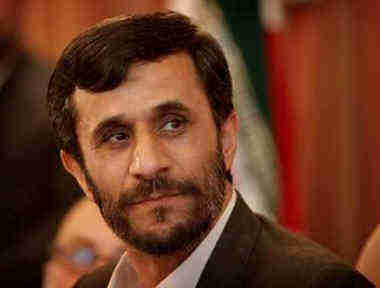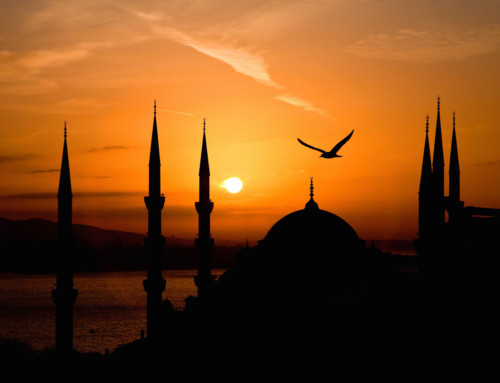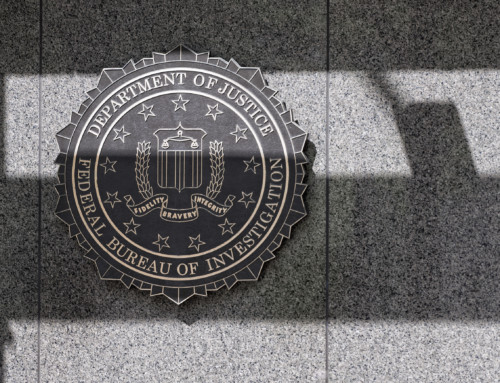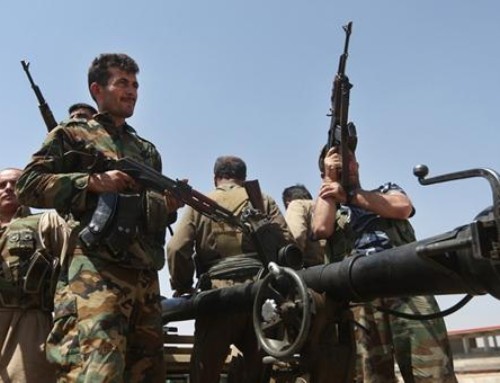With the bombings in London providing a backdrop, it’s important to note that just last year, the U.S. State Department named Iran as the most active sponsor of terrorism. And with the sham election and elevation of Mahmoud Ahmadinejad (Moe the Assassin) to the Presidency of Iran, one can easily view his story as that of a “made man” in a rogue-state terrorist crime family. The West needs to view Moe as a kind of Islamofascist “capo,” a man who has been granted his new position as a reward for long service in conducting the risky, lethal operations necessary to running the family’s criminal enterprise.
On Monday June 27th, the day that the runoff results were final, a London-based Iranian news agency, Iran Focus, outed Moe, with these photos, as one of the ring leaders who took over the U.S. embassy in November of 1979. Within 24 hours the photos had traveled around the globe at the speed of light, the Iranian government denied that it was Moe in the picture and the Bush Administration expressed concern and a desire to know conclusively if in fact Iran’s new president was a hostage taker.
A web search combining the name Ahmadinejad with U.S. hostages produced lots of Iranian news-agency stories that describe how Moe first came to the attention of the ruling Mullahs. Numerous reports record that shortly after the fall of the Shah, while attending Elm-o Sanaat University in Tehran, Moe became one of the founders of a student association dedicated to worldwide Islamic revolution. Meanwhile Khomeini founded the OSU, (Office for Strengthening Unity) an official branch of government tasked with purging dissident lecturers and students many of whom were arrested and later executed. (Most Universities were closed for three years after the fall of the Shaw.) Iran Focus reports that the OSU played a central role in the obviously state-sanctioned embassy takeover and that Moe was the sole representative from Elm-o-Sanaat to occupy a seat in its leadership hierarchy. During the 455 days that the hostages were held, Moe along with the other OSU leaders met regularly with Khomeini himself.
Subsequently, a number of the American hostages have identified Moe as one their captors. A British journalist, John Simpson, has gone on the record as remembering him in a leadership role on the grounds of the embassy compound. So let’s see. We have Iranian news agencies reporting him to have been among the Tehran-based OSU planners of the Embassy takeover. We have eye witnesses, and compelling photographic evidence. Yet we’re to believe the Iranian government which contends that he wasn’t there? Codified in Islam is a practice called taqiyya, meaning dissimulation. It refers to the principle that absolves the believer from ever having to tell the truth to the unbeliever.
Next in the early 1980s, Ahmadinejad moved to the “Internal Security” department of the IRGC (Iran’s Revolutionary Guards Corp) and earned notoriety as a ruthless interrogator and torturer. According to the state-run website Baztab, allies of the outgoing President Mohammad Khatami have revealed that Ahmadinejad worked for some time as an executioner in the notorious Evin Prison, where thousands of political prisoners were executed in the bloody purges of the 1980s.
In 1986, Ahmadinejad became a senior officer in the Special Brigade of the IRGC and was stationed in Ramazan Garrison near Kermanshah in western Iran. Ramazan Garrison was the headquarters of the Revolutionary Guards’ “extra-territorial operations.” Ahmadinejad was the senior planner of a series of assassinations in the Middle East and Europe, including the assassination of Iranian Kurdish leader Abdorrahman Qassemlou, who was shot dead by senior officers of the Revolutionary Guards in a Vienna flat in July 1989. Ahmadinejad was a key planner of the attack, according to Austrian.
According to Iran Focus, in 1997, the newly-installed Khatami administration removed Ahmadinejad from his post as chief assassin) and returned him to Elm-o Sanaat University to ostensibly teach, but where his principal activity was to organize Ansar-e Hezbollah, “a radical gang of violent Islamic vigilantes.”
Then in April of 2003, Moe was literally appointed by the Council of Gaurdians, Khamenei’s ruling Mullahs, to be Mayor of Tehran. While there he was able to found a party of fundamentalist local politicians called the Developers of Islamic Iran which worked with his old cadre of thugs, the Revolutionary Guard’s. They were able to win most municipal elections in 2003 and the parliamentary election in 2004 owing to “low turnouts and general disillusionment with the “moderate” faction of the regime.”
Ahmadinejad’s record is typical of the men chosen by Khamenei’s entourage to put a new face on the clerical elite’s ultra-conservative identity. But beyond the shallow façade, few doubt that the Islamic Republic under its new President will move with greater speed and determination along the path of radical policies that include more human rights abuses, continuing sponsorship of terrorism, and the drive to obtain nuclear weapons.






